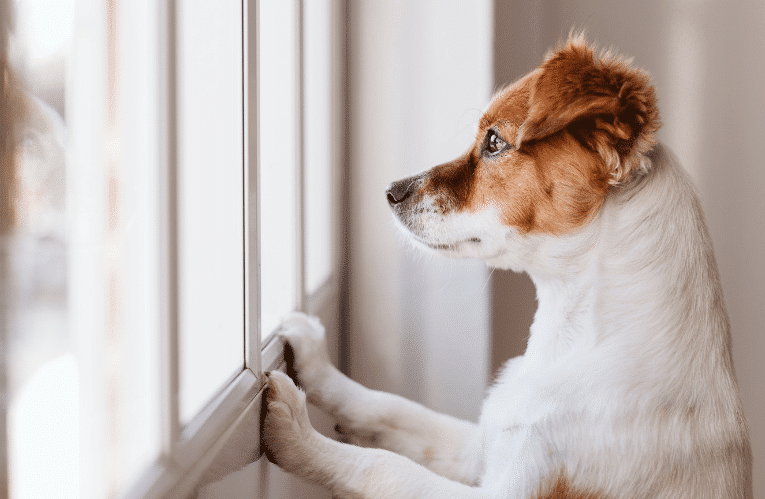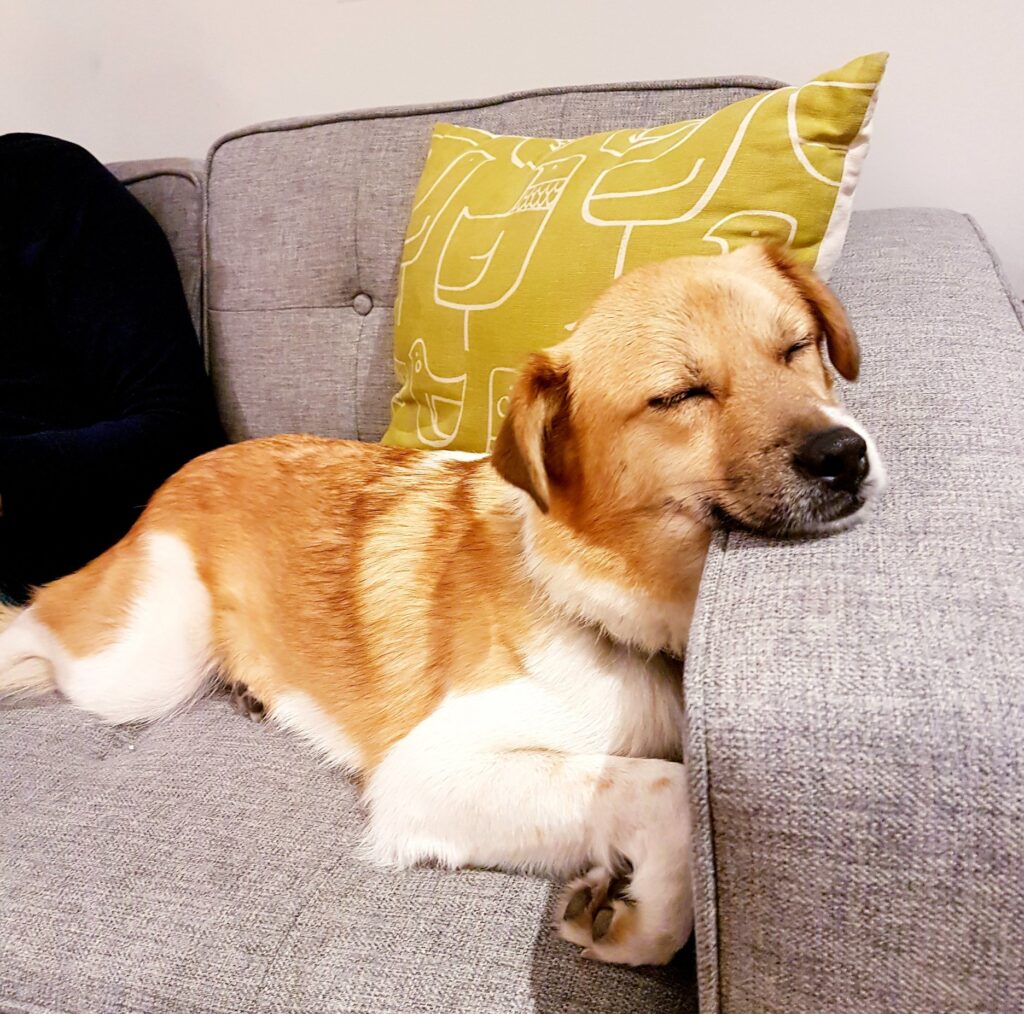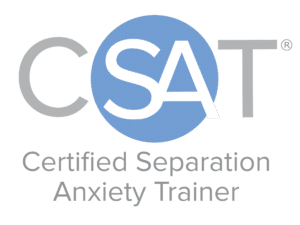Certified Separation Anxiety Training
Freedom from being a prisoner in your own home awaits. With our expert Certified Separation Anxiety Trainer, we’ll help your dog enjoy a relaxing snooze at home alone while you go to work, for shopping, or to enjoy the company of friends and family again.

End the Emotional and Financial Drain
Have you come home with a note on your door from the neighbours saying “Your dog barked non stop for 4 hours”?
You’ve reviewed the camera footage, and it’s true – your dog paced non-stop, whined, barked, and cried the entire time you were gone.
It breaks your heart to see your dog in so much distress.
The complaints from the neighbours are piling up, and so is the daycare bill week after week.
If you’re tired of just staying home 7 days a week, or paying thousands of dollars per month for dog sitting and daycare, there’s a real solution.
A systematic, data-driven, evidence-based approach to treating Separation Anxiety exists, and it’s helped countless dogs.
If you want your life back and don’t want to spend tens of thousands of dollars in dog daycare for the rest of your dog’s life, book a free call with us today.
Separation Anxiety in Dogs
Is stressful for your family AND your dog – but it can be modified!
If your dog does two or more of the following things when left home alone, your dog may have separation anxiety:
Separation Anxiety Symptoms
- Barks or Howls (not triggered by hearing noises outside or in the hallway) simply because everyone has left
- Pacing, Whining, Drooling, simply because everyone has left (observable via webcam)
- Chewing, Digging, Destruction, especially around the door the owners have exited from (door frame, door, etc.)
- Urinating or Defecating, when under normal circumstances, the dog is 100% house trained
- Won’t eat food (owner has tried leaving behind the kong filled with liverwurst, tripe, wet dog food, cheese whiz, etc.) and it remains uneaten until the humans return home
- Stress behaviours such as pacing, whining, or attention seeking behaviour as the owners prepare to leave (pre-departure cues are triggering stress)
Some owners incorrectly assume their dog has separation anxiety when in fact these common mistakes are made:
Probably Not Separation Anxiety:
- Juvenile dogs destroy sofa cushions or tip over garbage bins because it’s fun and they are bored (confinement and puppy proofing is required)
- Accidents occur because the dog is not properly house trained (dog sometimes has accidents even when people are home)
- Barking occurs in response to environmental noises in the hallway or outside
- Inadequate exercise and/or the dog has simply been left isolated for longer than is reasonable

I wanted to post a success story. After a combination of working from home and gradual desensitization, plus the help of a great doggy daycare when we had to both be at work, we’re happy to say that Russell can now be left alone, happy to see his dogwalker who comes at lunch.
– Russell and Family
Separation Anxiety Behaviour Modification Consulting Services

How We Help
We start with a 30-minute phone consultation to help you determine whether your dog’s issue is separation anxiety, and then provide two options to help.
Separation Anxiety training and consulting is delivered 100% over Zoom. It is a systematic process of doing departures, gathering video, reviewing it, collecting data, and then preparing expertly prepared training plans for the days ahead.
Key Elements of a Separation Anxiety Behaviour Modification Plan
- Owners need to commit to approximately 30 minutes of training per day
- Owners need to commit to suspending absences during treatment, which means relying on friends, family, bringing the dog to work, working from home, arranging for dog sitters/dog swapping, taking “stay at home shifts” with other family members, and utilizing dog daycares or all-day dog walking services.
- Owners need to understand treatment typically takes 3-6 months, although individual cases will vary.
- An expert needs to create Daily Missions (5 days a week) that are individualized training exercises/departure scenarios based on your dog’s progress and needs. These missions are created based on live virtual assessments. The precision of how these are prepared greatly affect the trajectory of your dog’s progress. The fastest path to success is with the expert eye of a CSAT preparing these daily missions.
What’s It Cost?
Initial 30 Minute Call
Start Here- Initial 30 Minute Phone Call
- Overview of Separation Anxiety Treatment Plan
- Opportunity to ask our CSAT questions
Initial Assessment
Data Gathering, Video Baseline, Goal Setting- 90-minute session
- Behaviour history of dog
- Behaviour goals
- Behaviour assessment
- Video recording of behaviour assessment
- Personalized recommendations
- Outlined plan for moving forward
- Answer any questions
CSAT Coaching (4 Weeks)
The fastest path to long-term change- Includes Initial Assessment ($250 value)
- Four Weeks of Support:
- 5 Weekly Missions (Departure) Plans
- Weekly Reassessments
- Feedback and Support
- Data Tracking and Progress Monitoring
- Ongoing Troubleshooting
For details regarding class/training policies, please see our Policy page:
Get Started
You are one step closer to relief for you and your dog from Separation Anxiety.
The next step is to request your 30-minute initial consultation:

